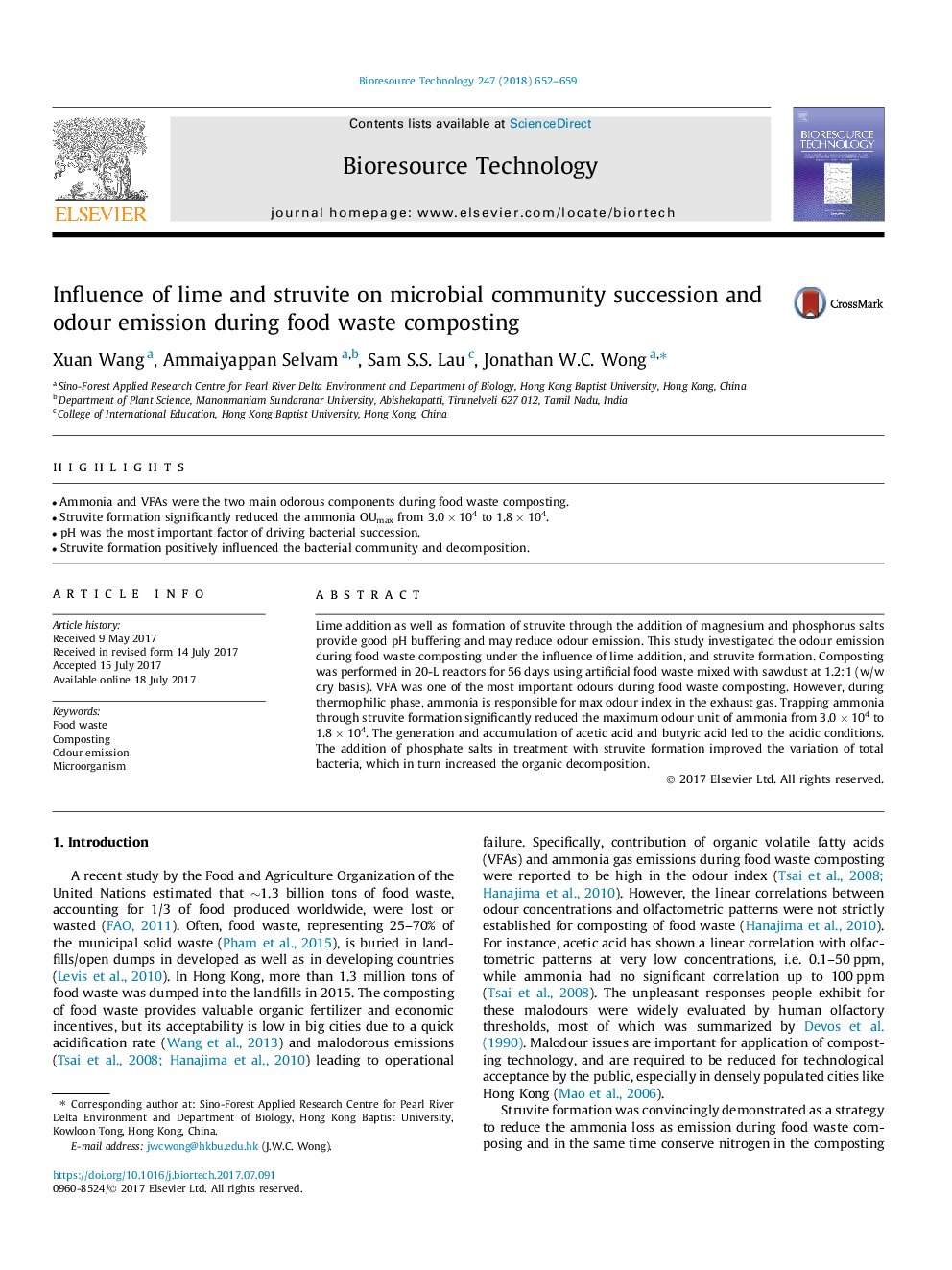| کد مقاله | کد نشریه | سال انتشار | مقاله انگلیسی | نسخه تمام متن |
|---|---|---|---|---|
| 4996688 | 1459897 | 2018 | 8 صفحه PDF | دانلود رایگان |
- Ammonia and VFAs were the two main odorous components during food waste composting.
- Struvite formation significantly reduced the ammonia OUmax from 3.0Â ÃÂ 104 to 1.8Â ÃÂ 104.
- pH was the most important factor of driving bacterial succession.
- Struvite formation positively influenced the bacterial community and decomposition.
Lime addition as well as formation of struvite through the addition of magnesium and phosphorus salts provide good pH buffering and may reduce odour emission. This study investigated the odour emission during food waste composting under the influence of lime addition, and struvite formation. Composting was performed in 20-L reactors for 56Â days using artificial food waste mixed with sawdust at 1.2:1 (w/w dry basis). VFA was one of the most important odours during food waste composting. However, during thermophilic phase, ammonia is responsible for max odour index in the exhaust gas. Trapping ammonia through struvite formation significantly reduced the maximum odour unit of ammonia from 3.0Â ÃÂ 104 to 1.8Â ÃÂ 104. The generation and accumulation of acetic acid and butyric acid led to the acidic conditions. The addition of phosphate salts in treatment with struvite formation improved the variation of total bacteria, which in turn increased the organic decomposition.
Journal: Bioresource Technology - Volume 247, January 2018, Pages 652-659
